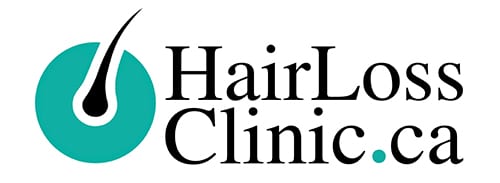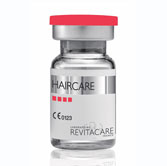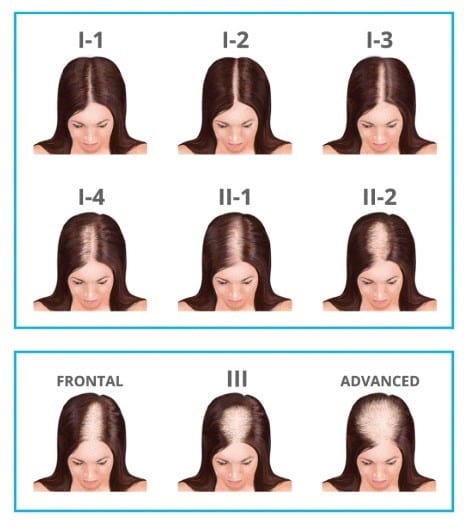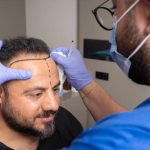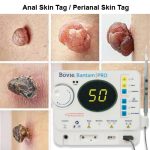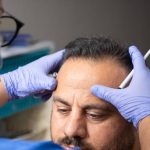
HAIR LOSS WOMEN AND ALOPECIA TREATMENTS
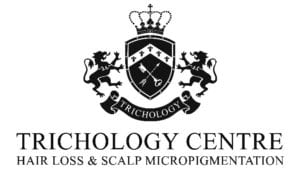
HAIR LOSS WOMEN
Introduction:
Hair loss in women can have a profound impact, both psychologically and emotionally, causing distress and a loss of confidence. Surprisingly, approximately one third of women experience hair loss at some point in their lives, with postmenopausal women facing an even higher risk, reaching up to two-thirds. Understanding the different types of hair loss that women commonly encounter is crucial in finding effective treatment solutions. In this article, we will explore the most prevalent causes of hair loss in women and recommend suitable treatment approaches to help restore hair health and regain self-assurance.
TYPES OF HAIR LOSS WOMEN EXPERIENCE
- Female pattern hair loss (androgenic alopecia)
- Alopecia areata
- Cicatricial alopecia (scarring alopecia)
- Telogen effluvium
- Traction alopecia
- Traumatic alopecia
- Trichotillomania (Hair-pulling disorder)
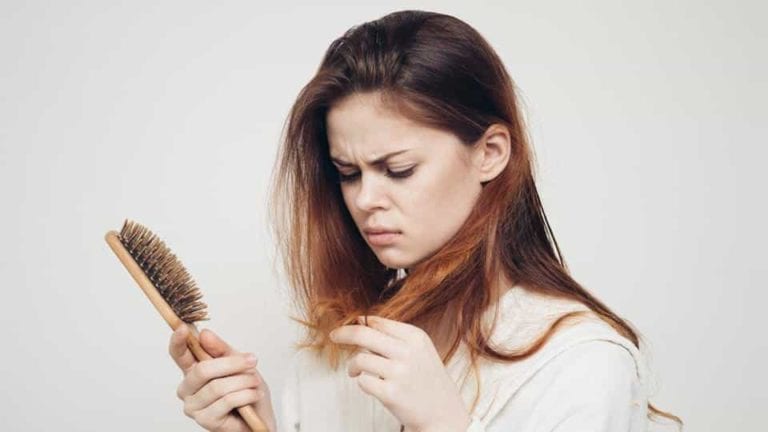
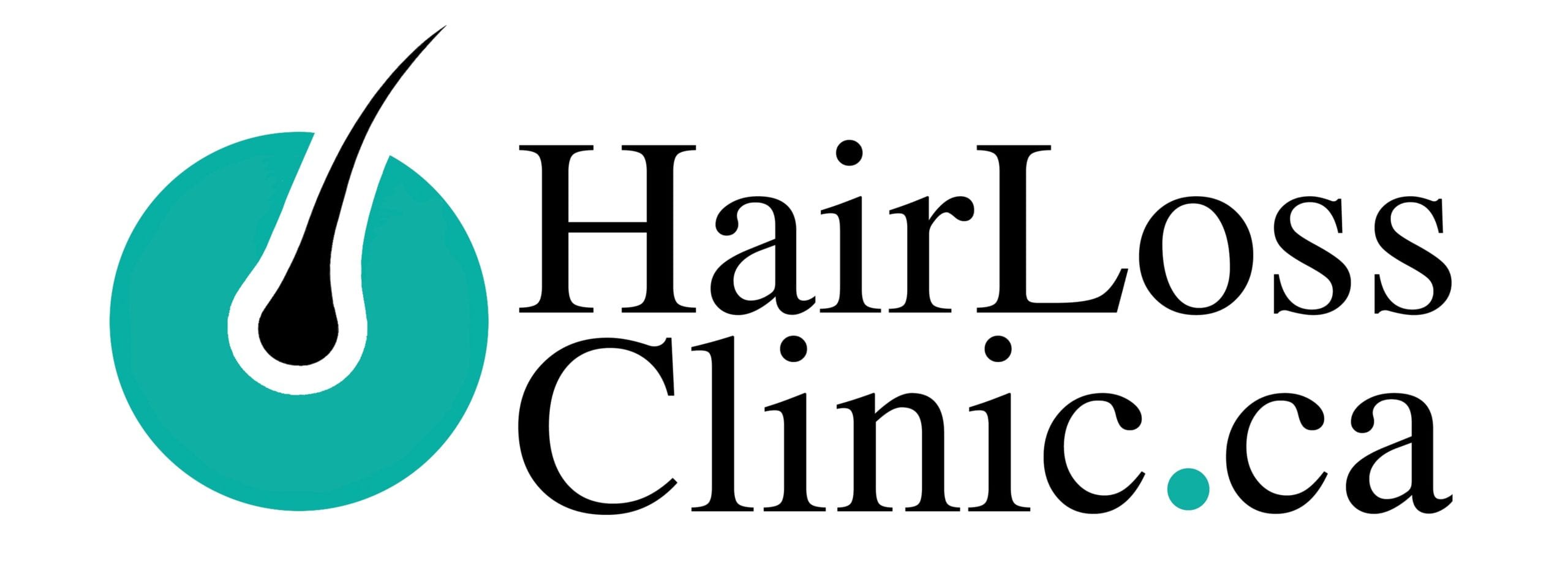
Female pattern hair loss (androgenic alopecia)
Androgenic alopecia effects both men and women. For men, it’s called male pattern hair loss, and for women, female pattern hair loss. Women experience a general thinning over the entire scalp, with the most extensive hair loss at the crown. About one third of women experience some form of hair loss in their lives. Postpartum hair loss occurs a few months after having a baby. For postmenopausal women, about two thirds experience some form of hair loss.
Female pattern hair loss can be inherited from either parents. It can develop as early as in their late teen years. The earlier it starts the more severe the hair loss tends to be. For more information about hair loss women – female pattern hair loss CLICK HERE
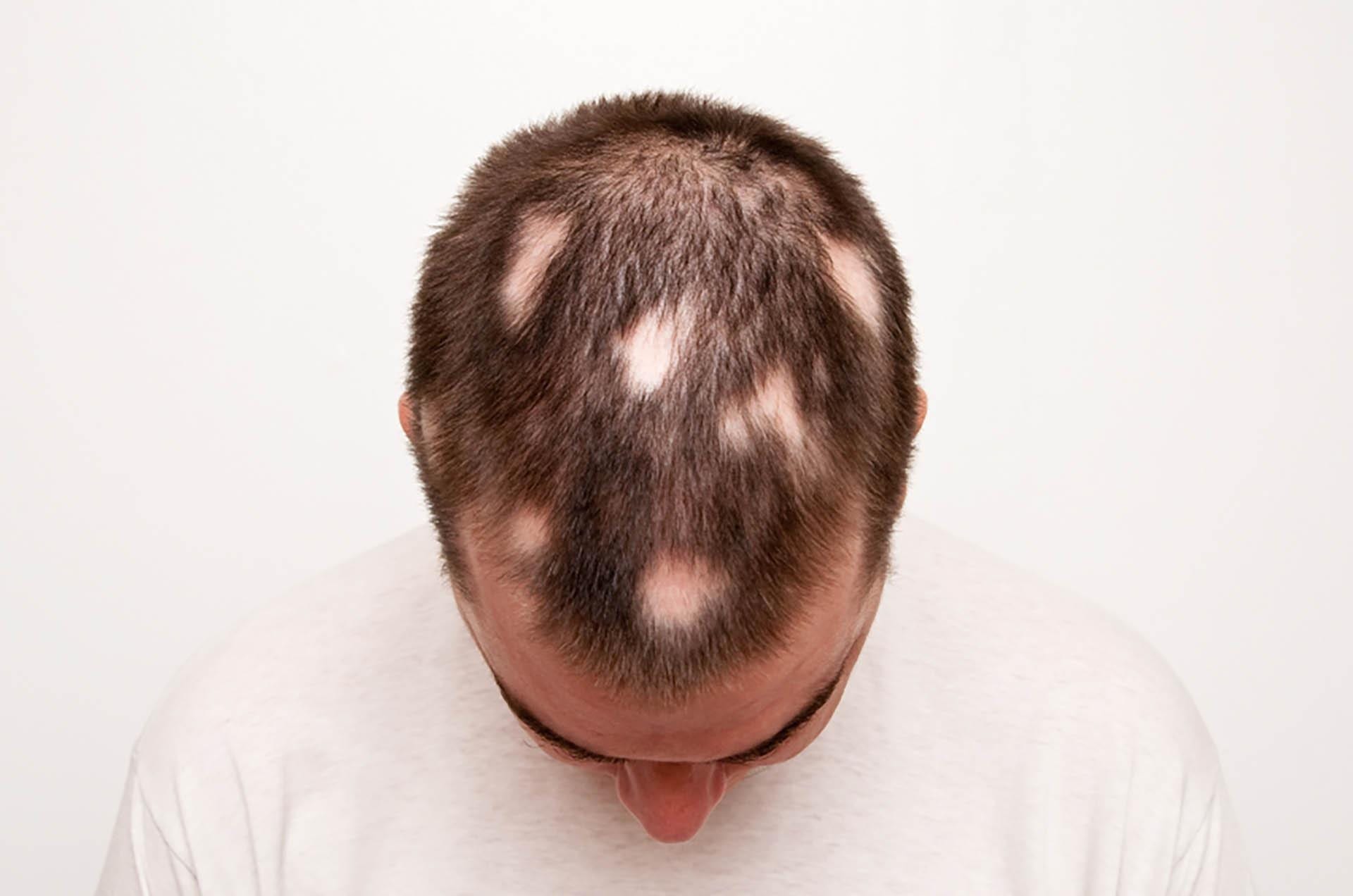
Alopecia areata
Alopecia areata is a condition that causes hair to fall out in small patches. It is a common autoimmune disorder that often results in unpredictable hair loss. The amount of hair loss varies. Some women lose only in a few spots while others may lose a lot more. Each case of alopecia areata is different. Alopecia areata can’t be cured but can be treated. For more information about alopecia areata CLICK HERE
Cicatricial alopecia (scarring alopecia)
Cicatricial alopecia, also known as scarring alopecia, is hair loss accompanied with scarring. It can be caused by a group of rare disorders that destroy the hair follicle and replace it with scar tissue. Cicatricial alopecia causes permanent hair loss and hair follicles may scar beyond the point of repair. For more information about hair loss women – cicatricial alopecia CLICK HERE


Telogen effluvium
Telogen effluvium is a temporary hair loss that can happen after a shock, stress, or traumatic event. Usually the top of the scalp is affected with a noticeable shedding of hair. The shedding of the hair occurs during the telogen phase or resting phase of the hair follicle. It is in this phase that telogen hairs begin to shed at an increased rate, for example 300 hairs a day as compared to 100 hairs a day for the average person.
Hairs enter the telogen phase rest in place for two to four months before falling out, so the fallout may occur two to four months after the event. Telogen effluvium rarely lasts longer than six months. Chronic telogen effluvium occurs when you’ve had periods of hair shedding for more than 6 months. For more information about hair loss women – telogen effluvium CLICK HERE
Solution
Telogen effluvium is not permanent and usually corrects itself over time. No treatment has been found to be effective for telogen effluvium. A proper diet that includes protein, iron and other nutrients can help.
Traction alopecia
Traction alopecia is a form of hair loss caused by pulling force being applied to the hair, usually by wearing hair in tight ponytail, pigtails, or braids.
Solution
Traction alopecia can be reversed simply by stopping the pull on the hair. If this is not done, permanent hair loss could occur if it isn’t intervened soon enough as hair follicles could become so damaged and scarred that they can’t produce new hair. Changing your hairstyle so the hair is not pulled and your hair should start to grow back normally. For more information about hair loss women traction alopecia CLICK HERE
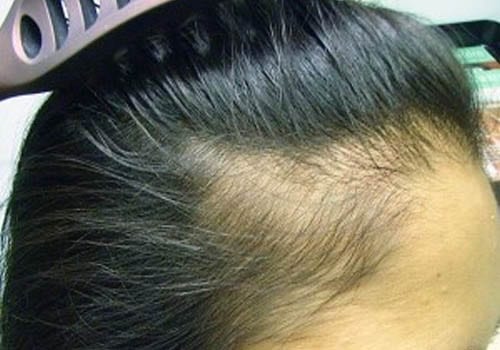

Traumatic alopecia
Traumatic alopecia is hair loss caused by an injury to the scalp. Traction alopecia is included in traumatic alopecia but there are other things that can cause traumatic alopecia. Grooming methods that attempt to straighten naturally curly hair can cause stress to hair follicles. Tight rollers, braiding, overheating of hair shafts from hot combs and hairdryers, hair straighteners, vigorous combing, chemical bleaches, can all contribute to traumatic alopecia. Other forms of traumatic alopecia include accidental injury to the hair follicles such as spousal and child abuse, and pressure necrosis.
Traumatic alopecia is hair loss caused by an injury to the scalp. Traction alopecia is included in traumatic alopecia but there are other things that can cause traumatic alopecia. Grooming methods that attempt to straighten naturally curly hair can cause stress to hair follicles. Tight rollers, braiding, overheating of hair shafts from hot combs and hairdryers, hair straighteners, vigorous combing, chemical bleaches, can all contribute to traumatic alopecia. Other forms of traumatic alopecia include accidental injury to the hair follicles such as spousal and child abuse, and pressure necrosis.
Solution
Traumatic alopecia can be reversed by stopping the processes that is causing the injury to the hair follicles.
Trichotillomania (Hair-pulling disorder)
Trichotillomania is a mental disorder whereby the patient has the irresistible urge to put out their hair on their scalp, eyebrows or other areas of their body, despite trying to stop. There is usually a sense of pleasure or relief after the hair is pulled. Women who experience trichotillomania may also bite their nails, pick their skin, or chew their lips.
Solution
Trichotillomania is a long-term mental disorder. Without treatment, symptoms can worsen, and hair loss could become permanent.
For more information about trichotillomania CLICK HERE

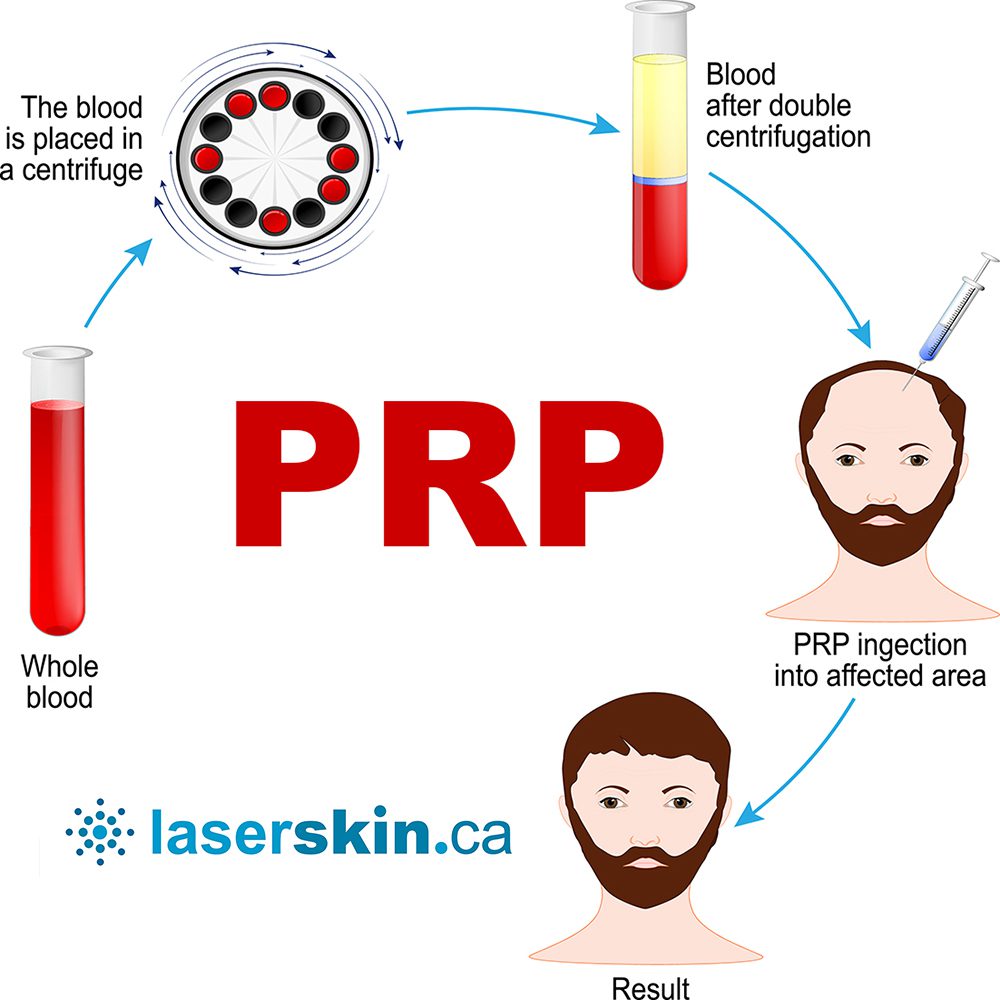
PRP hair loss therapy is one of the best hair loss treatment for women. PRP stands for Platelet-Rich Plasma, and is a safe hair loss treatment using the platelet rich growth factors in your own blood. The PRP hair loss treatment consists of 3 parts, taking the blood, spinning the blood to separate the plasma, and reinjecting the plasma back into the scalp. For more information on hair loss women – PRP therapy CLICK HERE.
Q & A
What are the common causes of hair loss in women?
Hair loss in women can result from a range of causes, with hormonal imbalances being one of them (such as those associated with pregnancy or menopause), genetics, medical conditions (like thyroid disorders or alopecia areata), certain medications, nutritional deficiencies, extreme stress, and excessive hairstyling or chemical treatments.
How can hormonal imbalances contribute to hair loss in women?
Hormonal imbalances, particularly fluctuations in estrogen and progesterone levels, can disrupt the hair growth cycle. For example, during menopause, a decrease in estrogen can lead to thinning hair. Similarly, conditions like polycystic ovary syndrome (PCOS) can cause excessive androgen production, resulting in hair loss.
Are there any effective treatments for hair loss in women?
The treatment options for hair loss in women depend on the underlying cause. Some common treatments include medications like minoxidil (topical solution), hormone therapy (e.g., oral contraceptives or hormone replacement therapy), platelet-rich plasma (PRP) therapy, low-level laser therapy, and hair transplantation in certain cases.
Can nutritional deficiencies contribute to hair loss in women?
Certain nutritional deficiencies can play a role in hair loss. Inadequate intake of iron, zinc, biotin, vitamin D, and other essential nutrients can affect the health of hair follicles and lead to thinning or shedding. A balanced diet and, if necessary, supplements can help address these deficiencies and promote hair growth.
Is stress a significant factor in hair loss among women?
A5: Yes, prolonged and extreme stress can contribute to hair loss in women. This condition, known as telogen effluvium, occurs when many hair follicles enter the resting phase prematurely, leading to increased shedding. Managing stress through relaxation techniques, exercise, and lifestyle changes can help minimize its impact on hair health.
Can certain hairstyles or hair treatments cause hair loss in women?
Yes, certain hairstyles that pull the hair tightly, like ponytails, braids, or buns, can lead to traction alopecia—a type of hair loss caused by excessive tension on the hair follicles. Additionally, chemical treatments like perming, relaxing, or repeated use of hot styling tools can damage the hair and contribute to hair loss.
Are there any natural remedies or home treatments that can help with hair loss in women?
While there’s limited scientific evidence, some natural remedies and home treatments might positively impact hair health. These include regularly massaging the scalp, using essential oils like rosemary or lavender, applying aloe vera gel, consuming a balanced diet rich in vitamins and minerals, and avoiding harsh chemical products.
How long does it typically take to see results from hair loss treatments in women?
The time it takes to see results from hair loss treatments can vary depending on the individual and the specific treatment. In general, it may take several months before noticeable improvements occur. To establish the most suitable treatment plan, it is crucial to maintain realistic expectations and seek guidance from a healthcare professional.
Can women take any preventive measures to reduce the risk of hair loss?
While not all types of hair loss can be prevented, there are some measures women can take to promote hair health. These include maintaining a balanced diet, avoiding excessive heat or chemical treatments, practicing gentle hair care techniques, managing stress levels, protecting the hair from environmental damage (e.g., sun exposure), and promptly addressing any underlying medical conditions.
When should a woman seek professional help for hair loss?
It is advisable for a woman to seek professional help for hair loss under the following circumstances:
Excessive Hair Shedding: If you notice a significant increase in hair shedding lasting more than a few months, it’s recommended to consult a healthcare professional. Healthcare professionals can assist in identifying the underlying cause and offering suitable treatment alternatives.
Sudden or Patchy Hair Loss: Sudden or localized hair loss might suggest an underlying medical condition, like alopecia areata. Seeking medical attention can help diagnose the issue and guide you toward suitable treatment options.
Family History of Hair Loss: If there is a family history of hair loss, particularly among women, it is advisable to seek early consultation with a healthcare professional. They can evaluate your risk factors and suggest preventive measures or treatment options if necessary.
Hair Loss Accompanied by Other Symptoms: If hair loss is accompanied by other symptoms like changes in the menstrual cycle, weight gain or loss, fatigue, or skin issues, it’s essential to seek medical advice. These symptoms could suggest an underlying medical condition requiring prompt attention.
Psychological Distress: Hair loss can significantly impact a woman’s emotional well-being and self-esteem. If hair loss is causing distress or affecting your quality of life, it’s important to contact a healthcare professional who can provide support and guidance.
Remember that healthcare professionals, including dermatologists or trichologists, are equipped with the knowledge and skills to accurately assess the underlying cause of hair loss and suggest individualized treatment options.
FREE ONLINE HAIR LOSS ASSESSMENT FORM
There are different hair loss women experience. Get a Certified Trichologist to assess and help treat your condition in Toronto and Greater Toronto Area. Please complete our online Trichology Assessment Form to get started now.
Conclusion:
Hair loss can be a challenging and distressing experience for women, affecting their self-esteem and overall well-being. It is crucial to recognize that around one third of women experience hair loss at some point in their lives, emphasizing the importance of identifying the specific type of hair loss and pursuing suitable treatment choices. By understanding the causes, such as androgenic alopecia, alopecia areata, cicatricial alopecia, telogen effluvium, traction alopecia, traumatic alopecia, and trichotillomania, women can explore various treatment approaches and regain confidence in their hair’s health and appearance. It is advisable to consult with our trichologist at Trichology Centre to receive tailored advice and find the most effective solutions to address hair loss and support women on their journey to reclaiming their vibrant and beautiful hair.
Book Your Free Consultation Today Or Call (647) 492-9093
Comments are closed.
